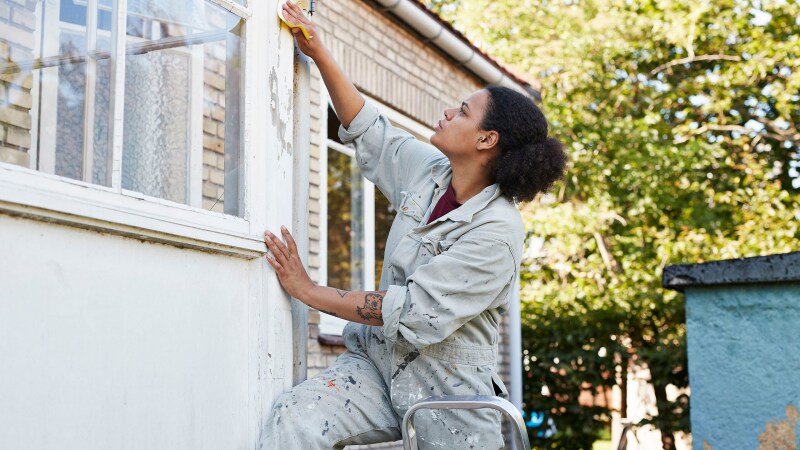House termites and damage: how to protect your home

Termites are considered pests for a reason: they’re incredibly stubborn, can cause substantial damage and may be hard to get rid of. Termite damage often comes with a cost, including extermination and home restoration, if necessary.
The good news? Termite damage is both preventable and reparable. Here’s some information on termites, termite damage and how you might be able to deal with them if a situation arises.
How do termites get into your house?
There are three main types of termites that can get into your house: drywood, dampwood and subterranean. Drywood and dampwood termites will both eat and live in the wood they discover. Subterranean termites typically live in underground colonies that travel to and from the wood discovered above them. Subterranean termite colonies are usually bigger than drywood and dampwood colonies.
There are a few ways termites can enter your house. Some depend on the climate and type of termite, but the most common ways are:
- Wood-to-ground contact: Any wood structure that connects your home to the ground, which includes doorframes, desk posts, porches and more.
- Holes: Sometimes termites can find and crawl through holes in the base of a home’s structure or in concrete slabs.
- General crevices: Some termites, especially in drywood conditions, will find a wood crevice for their nest and build a home for their eggs until they eventually colonize and begin deconstructing.
What causes termites to invade your house?
The general theme for termites is wood — the creatures love it. It’s both their home and their food source. Termites typically live in trees, lumber, soil and wooden structures they have access to. Depending on the type of termite, certain weather conditions (typically warm, humid climates) attract them. Because of this, the South, Southeast, West and Southwest areas of the United States are typically the most vulnerable to termites. These environmental conditions, combined with vulnerabilities in your home structure, can make your home susceptible to termite invasions.
Signs of termite damage
Unfortunately, it’s difficult to detect termites before a bit of damage is already done. So, the best way to both find and treat termite damage is knowing the signs. You may also come across termite infestations during a home inspection, which typically occurs before you become a homeowner. If you do come across a termite infestation during a home inspection, depending on the extent of the damage, you may want to have the issue addressed before moving forward with the purchase.
You may have a termite infestation if you come across the following signs of termite damage:
- Broken down or discolored drywall
- Crumbling wood
- Unexplained loosening of tiles
- Termite wings, or swarms of termites (typically outdoors)
- Extremely stuck windows or doors
- Damaged paint or wallpaper that may resemble water damage
- Mud tubes, or little vein-like patterns, on the outside of your home’s structure that run from the ground up
- Termite frass, or droppings, typically resembling salt and pepper or wood dust and typically found in southern coastal states.
How to help prevent termite damage
Thankfully, there are a few ways to help avoid termites from invading your home:
- Seal any holes, crevices or entry points: Remember those entryways we mentioned above? One way to keep termites at bay is to seal any holes and crevices that may invite termites in, especially around the base of your home.
- Keep wood away from the home: Termites love cellulose, which is found in wood, plants and mulch. Keeping these things away from the sides of your home can help prevent termites from entering your home.
- Check that there are no pools of water: Pools of water (a leaky AC or improperly placed gutter may be the culprit) help attract termites.
- Clean out the gutters: Speaking of gutters, you may want to check that there are no leaves from last fall or debris stuck in them — termites love these wet and woodsy conditions!
- Schedule an annual inspection: Scheduling an annual termite inspection by a professional may help catch damage early on, saving you a headache down the line.
Does homeowners insurance cover termite damage?
Homeowners insurance is usually meant to cover damage from sudden and accidental phenomena. Unfortunately, pest control issues typically don’t fall under this type of coverage, especially because termites tend to take their time before causing significant damage. To deal with termites in your home, you’ll likely need to hire a pest control company and, potentially, other services to repair damage they may have caused. This can be quite costly depending on the specific issues created and how large the termite colony is.
Termite bonds
A termite bond is a warranty between a homeowner and a pest company. The contract typically covers termite retreatment and, in some cases, home repairs for a certain amount of time. Termite bonds are helpful if your home has suffered from termite damage in the past and is vulnerable to future infestations — they help provide peace of mind and help you avoid paying for multiple treatments.
In summary
Termite damage is a common pest — and pain — for homeowners. Equipping yourself with knowledge on the signs of termite damage can help with early detection and the prevention of costly damage.



